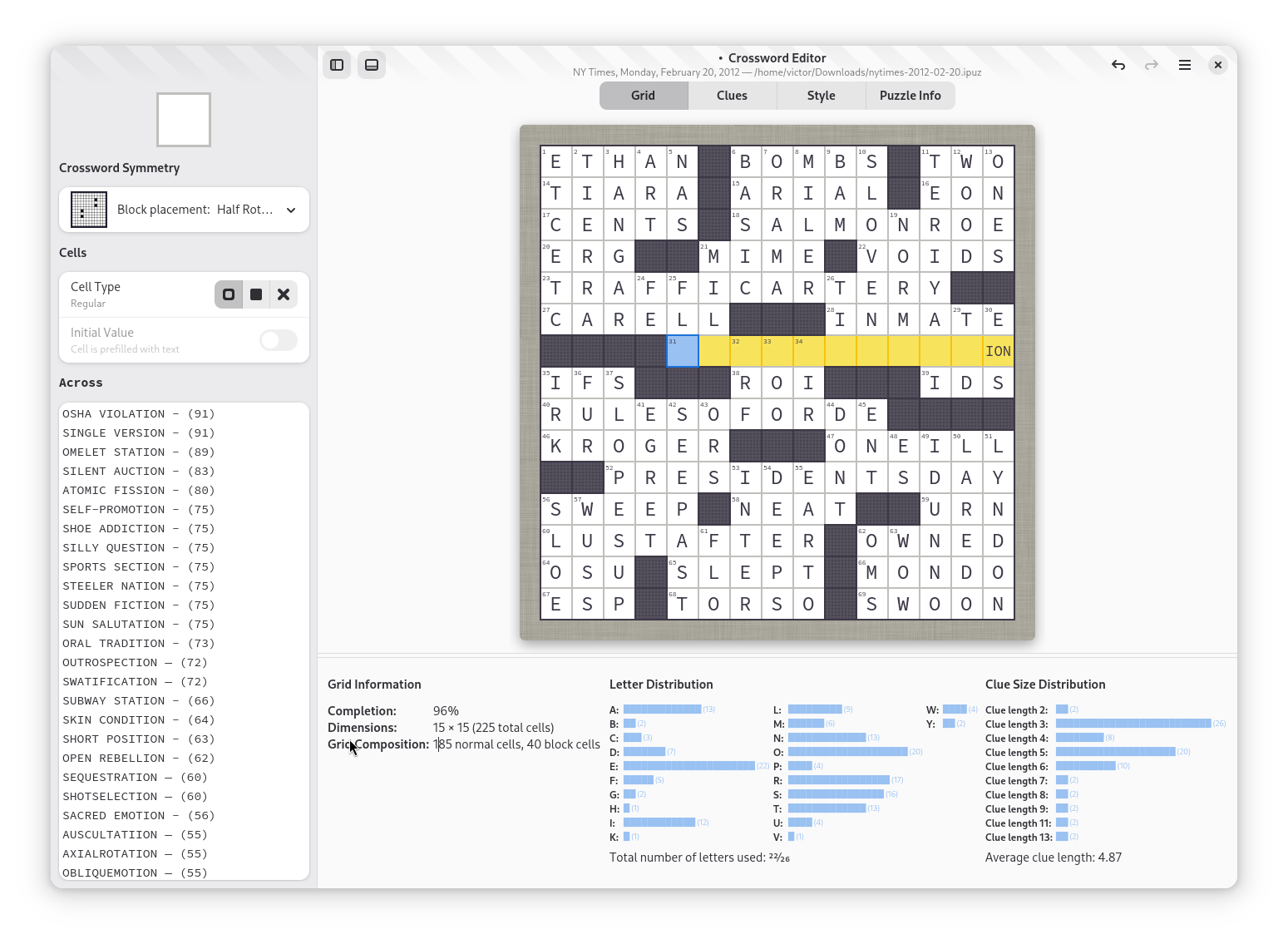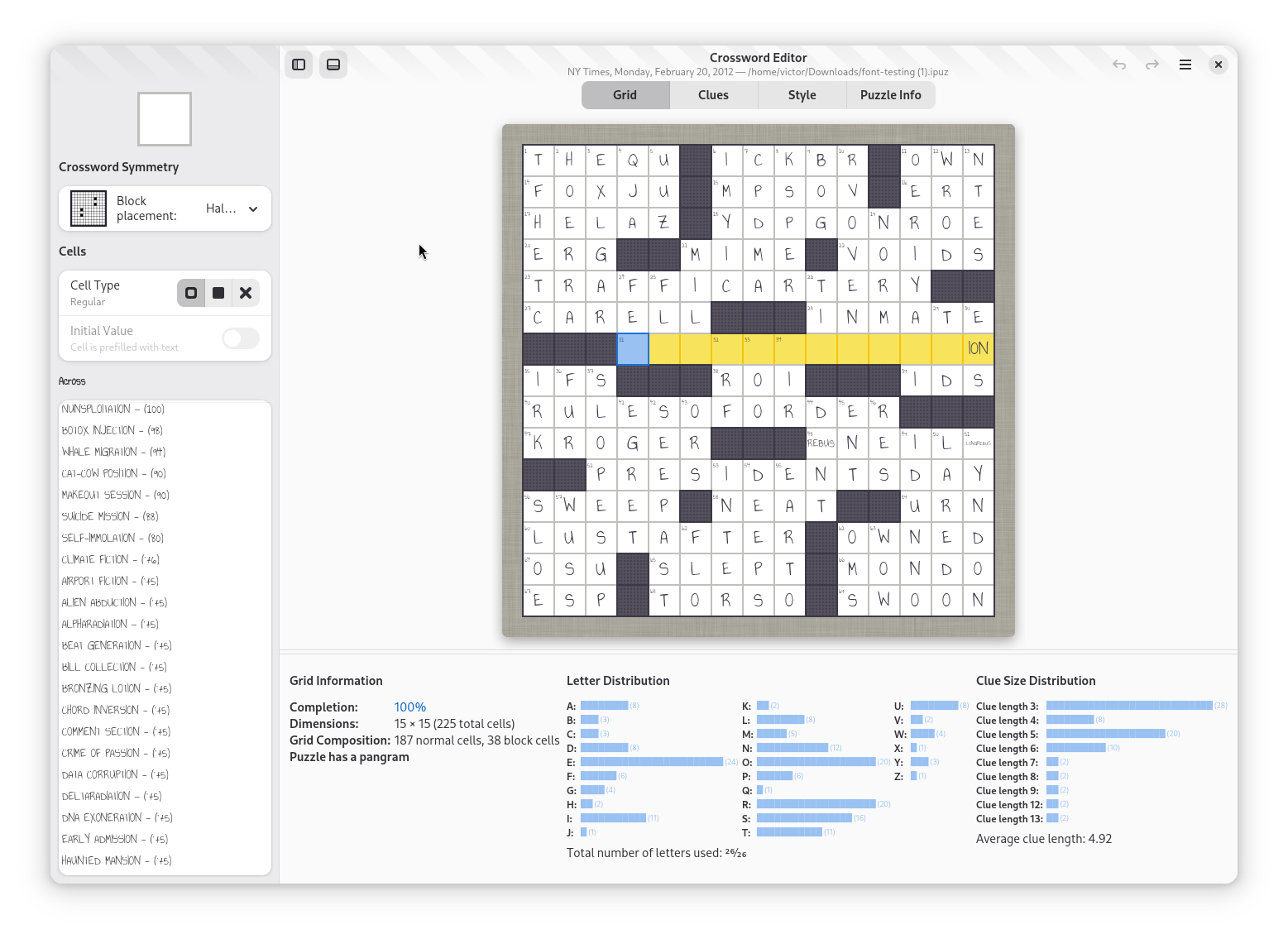My first design doc
In the last two weeks, I investigated some bugs, tested some fonts, and started working on a design doc.
Bugs
I found two more UI-related bugs (1, 2). These are in addition to the ones I mentioned in my last blog post—and they’re all related. They have to do with GTK and sidebars and resizing.
I looked into them briefly, but in the end, my mentor decided that the bugs are complicated enough that he should handle them himself. His fix was to replace all the .ui files with Blueprint files, and then make changes from there to squash all the bugs. The port to Blueprint also makes it much easier to edit the UI in the future.
Font testing
Currently, GNOME Crosswords uses the default GNOME font, Cantarell. But we’ve never really explored the possibility of using other fonts. For example, what would Crosswords look like with a monospace font? Or with a handwriting font? This is what I set out to discover.
To change the font, I used GTK Inspector, combined with this CSS selector, which targets the grid and word suggestions list:
edit-grid, wordlist {
font-family: FONT;
}
This let me dynamically change the font, without having to recompile each time. I created a document with all the fonts that I tried.
Here’s what Source Code Pro, a monospace font, looks like. It gives a more rigid look—especially for the word suggestion list, where all the letters line up vertically.
And here’s what Annie Use Your Telescope, a handwriting font, looks like. It gives a fun, charming look to the crossword grid—like it’s been filled out by hand. It’s a bit too unconventional to use as the default font, but it would definitely be cool to add as an option that the user can enable.
Design doc
My current task is to improve the word suggestion algorithm for the Crosswords Editor. Last week, I starting working on a design doc that explains my intended change. Here’s a short snippet from the doc, which highlights the problem with our current word suggestion algorithm:
Consider the following grid:
+---+---+---+---+ | | | | Z | +---+---+---+---+ | | | | E | +---+---+---+---+ | | | | R | +---+---+---+---+ | W | O | R | | < current slot +---+---+---+---+The 4-Down slot begins with ZER, so the only word it can be is ZERO. This means that the cell in the bottom-right corner must be the letter O.
But 4-Across starts with WOR. And WORO is not a word. So the bottom-right corner cannot actually be the letter O. This means that the slot is unfillable.
If the cursor is on the bottom right cell, then our word suggestion algorithm correctly recognizes that the slot is unfillable and returns an empty list.
But suppose the cursor is on one of the other cells in 4-Across. Then, the algorithm has no idea about 4-Down and the constraint it imposes. So, the algorithm returns all words that match the filter WOR?, like WORD and WORM—even though they do not actually fit the slot.
CSPs
In the process of writing the doc, I came across the concept of a constraint satisfaction problem (CSP), and the related AC-3 algorithm. A CSP is a formalization of a problem that…well…involves satisfying a constraint. And the AC-3 algorithm is an algorithm that’s sometimes used when solving CSPs.
The problem of filling a crossword grid can be formulated as a CSP. And we can use the AC-3 algorithm to generate perfect word suggestion lists for every cell.
This isn’t the approach I will be taking. However, we may decide to implement it in the future. So, I documented the AC-3 approach in my design doc.